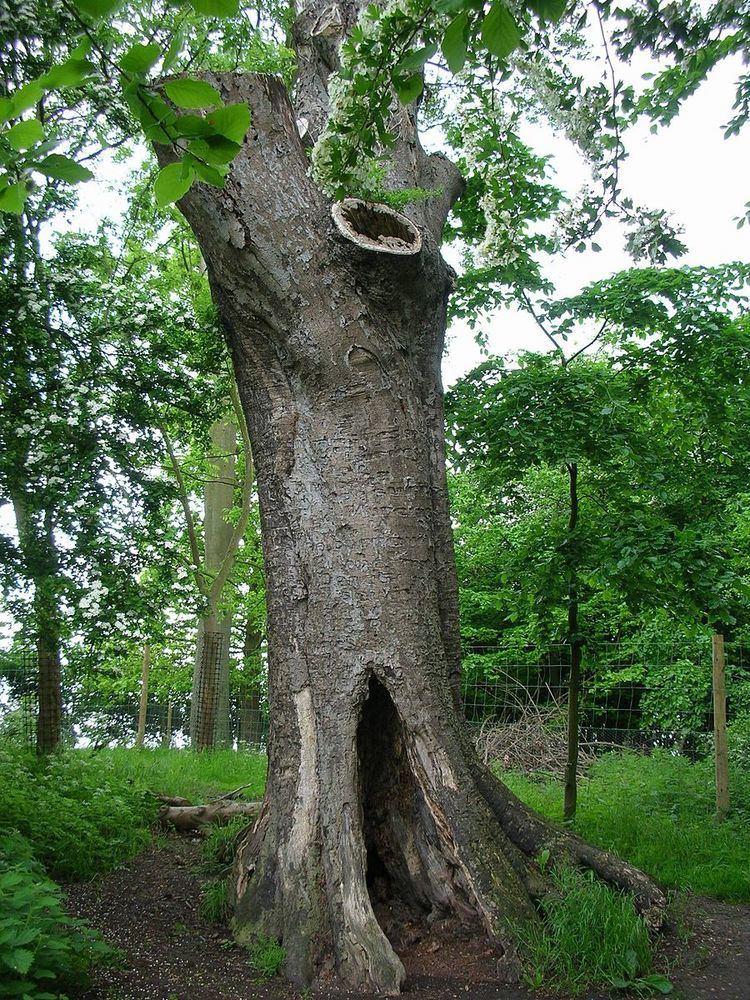Owner Northmoor Trust | Type Beech tree carving | |
 | ||
Year 1844/45 (see Carving section) Location | ||
The Poem Tree was a beech tree with a poem carved into it by Joseph Tubb, located on Castle Hill at Wittenham Clumps in Oxfordshire, England. The tree, which was believed to be around 300 years old, collapsed through a combination of long-standing rot and inclement weather in July 2012. It had died in the 1990s and after that, rotted completely while standing.
Contents
The poem was carved in the 1840s. A stone, including a transcription and rubbing of the poem, was erected close to the tree in 1994 to commemorate the 150th anniversary of the carving.
Carving
Tubb carved the 20-line poem into the tree over two weeks in the summer. Taking a ladder and a tent to the beech tree, Tubb carved the poem into the tree from memory, regularly forgetting to take the original copy with him. Sources vary as to whether the carving took place in 1844 or between 1844 and 1845.
Inspiration and interpretation
The poem was inspired by Tubb's fondness of the surrounding landscape, which is described in the first half of the first stanza. It has been suggested that the poem, which is also a summary of the location's history, was an example of Tubb's repressed creativity — his ambition was to be a wood carver but was pressured into being a maltster through family tradition. The "ancient earthwork" at "Mercia's bounds" may be Grim's Ditch or The Ridgeway (the latter is formed by part of Grim's Ditch). At the time of Alfred the Great, the border between Mercia and Wessex ran roughly in a line from east to west through the region. The mention of Cwichelm's (or Culchelm's) grave refers to Scutchamer Knob, a barrow on the The Ridgeway near Grim's Ditch, approximately 8.5 miles (13.7 km) south-west of the Poem Tree. The barrow was originally known as Cwichelmeshlaew or Cwichelm's Barrow, and is historically recorded as the site at which Cwichelm of Wessex was killed by Edwin of Northumbria in 636. Tubb's assertion that the barrow could be seen in the misty distance is plausible; Tim Allen (an Oxford-based archaeologist) suggests that on a clear day the Berkshire Downs can be viewed from the hills and vice versa.
The "smooth waters" of the River Thames refers to the river running through Dorchester-on-Thames, where the "monastic pride" of the Augustinian Dorchester Abbey is mentioned.
The disinterred coffins may refer to an 18th-century discovery of two skeletons at the summit of Round Hill. The slopes of the two hills were used for grazing, where excavations have revealed remains of buildings (including a possible Roman villa).
Legacy
In 1965, British geographer Henry Osmaston took a rubbing of the poem before it became largely illegible.
In the 1980s, the health of the tree began to decline and it died in the early 1990s. By the time of its collapse in 2012, the poem had become difficult to read; the few legible letters having been distorted with growth of the tree.
In 1994, a plaque and stone were placed nearby to commemorate 150 years since the carving. The plaque, which features a copy of Osmaston's 1965 tracing, is fixed to a large Sarsen stone.
Following its collapse, a crane was used to help make the tree safe but the much decayed trunk disintegrated. A few days later a tribute of flowers including gladioli were left anonymously on the shattered trunk. The remains of the tree have been left in situ to form a natural habitat.
